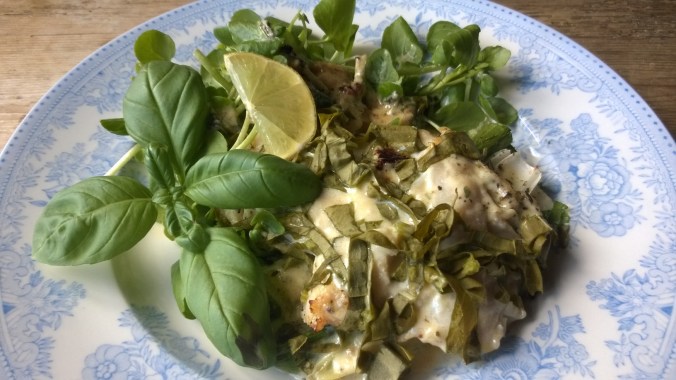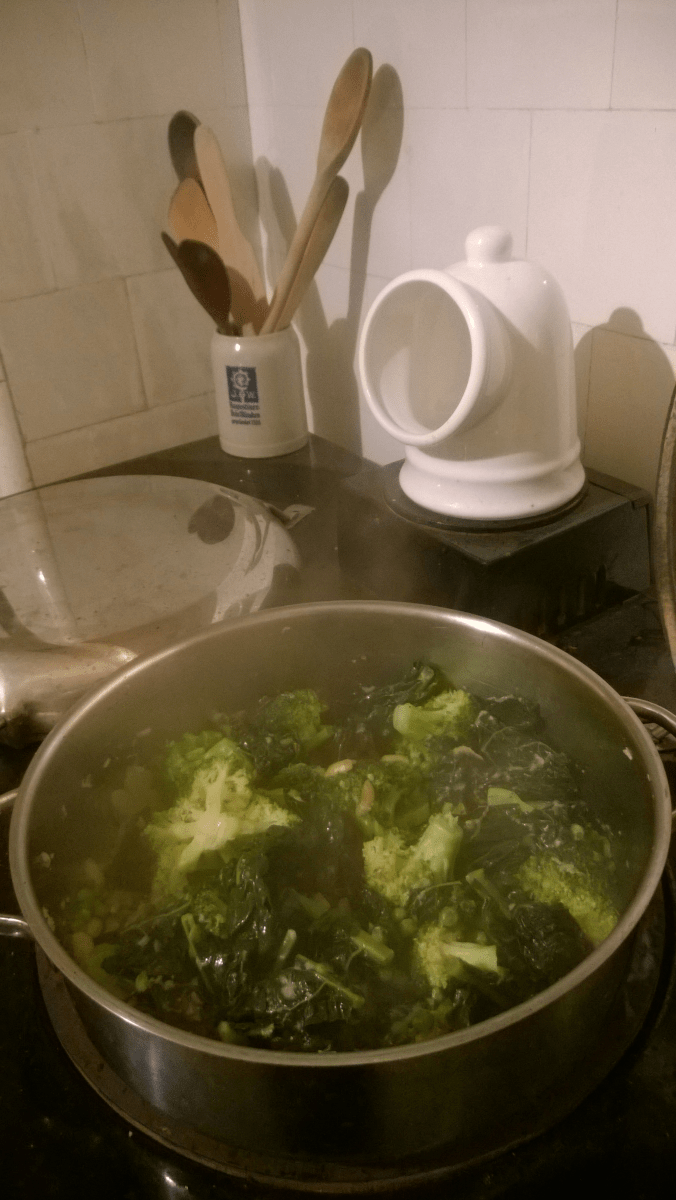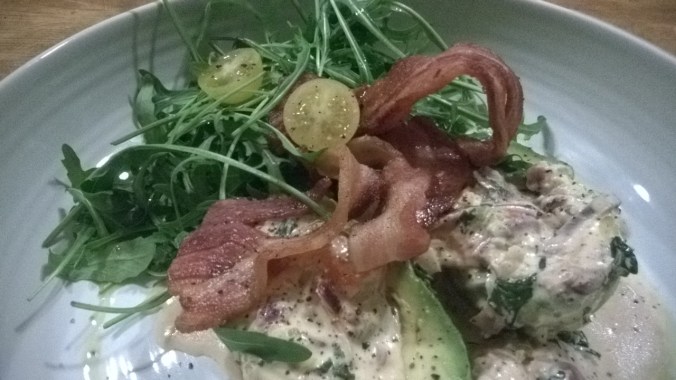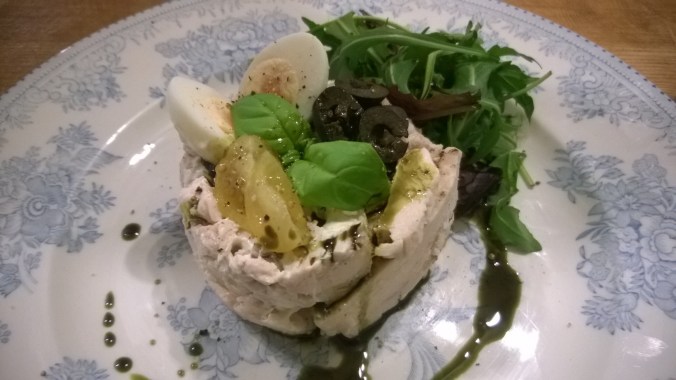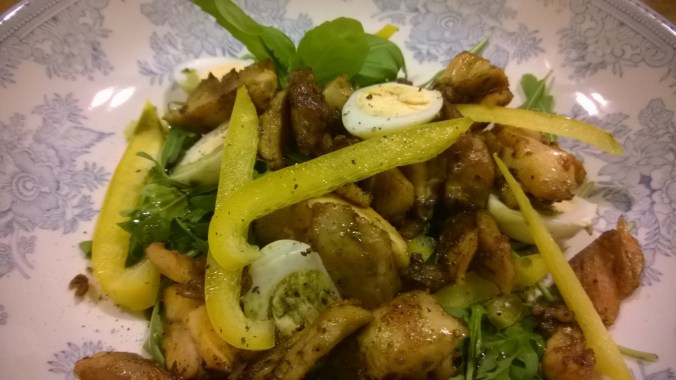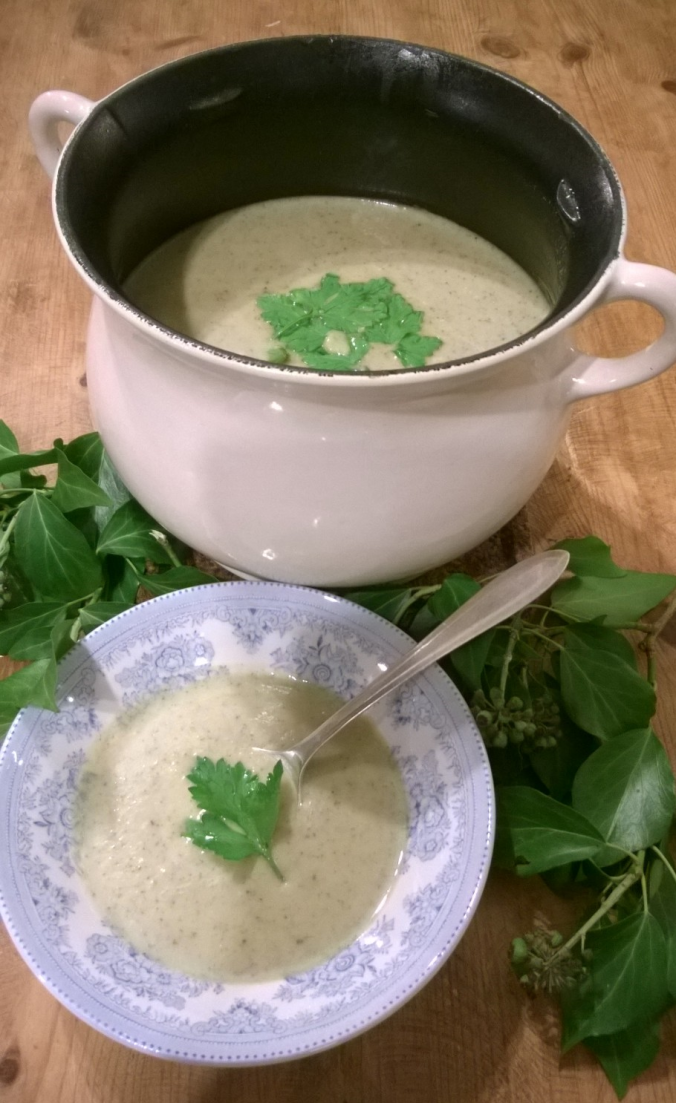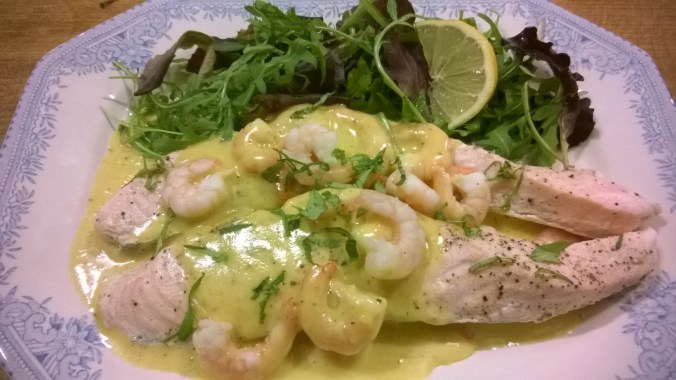
This dish can only be described as a textural symphony! Picture eating something the texture of clouds, interspersed with pools of stringy, melted mozzarella & the chewy crunch of salty smoked bacon. Well this recipe has it all!
Don’t be put off trying these because you think soufflés are difficult or fiddly. They’re actually very simple to prepare; all you have to do is understand the process, then you’re off and away! So what is that process…?
When you cook an egg it turns from liquid to solid. You see this when you fry an egg, scramble it, poach it &tc. It’s the protein which solidifies in heat; and a soufflé is no different from this. The act of a soufflé rising is the same as a cake. Hot air rises, which lifts the mixture upwards. Then, once the right temperature is reached, the heat solidifies the egg-proteins and the air-bubbles are ‘locked’ in place. Meringue has the same process – the proteins form a hard, crystalline structure which supports and holds up the rest of the mixture – quite simple, and quite marvellous!
If the egg-whites hold something up, what is it they’re holding? The answer to this is your soufflé mix, which carries the flavour of whatever you’re cooking. In this recipe I use parmesan, mozzarella cheese and bacon, but the process is the same for all. Whatever your ‘flavour-bearing mix’ is made of, you need to ensure that it’s the texture & consistency of melted chocolate. It’s that easy. Follow this rule of thumb and you’ll have perfect soufflés every time!
Before I jump the gun and detail the recipe in full, it’s worth noting that these are wonderful for a ketogenic diet, as they contain virtually no carbohydrate! This makes them ideal for diabetics or those who do not include gluten in their regime. You can make soufflés with no ‘solids’ at all; just the basic ingredients. This means they’re cheap, versatile and incredibly quick! Now do you see why I love them?
Start by cutting 6 smoked bacon rashers into a fine dice. If you have pre-cut ‘lardons’, all well and good. Fry these in a little butter for 10 minutes, or until the bacon is brown and crispy around the edges. I used 6 rashers for 4 soufflés. Once ready, remove from the heat and drain the bacon on kitchen-towel.
Whilst the bacon is cooking, you can start your egg-whites. In a clean mixing-bowl (I use a copper bowl as this stabilises the whites far better than anything else); separate 4 eggs, placing the yolks in a smaller bowl to form your mix. When it comes to separating eggs, I must admit to ‘not being flashy’. I simply crack them on the side of the bowl and strain the white through my fingers.
Once your eggs are separated, whisk the whites until they form stiff peaks. Volume should be minimum 8 times what you started with, and you should be able to upturn the bowl over your head and the mixture stays in situ (if it doesn’t then you have only yourself to blame!). The whisking forms valuable aerobic exercise for the cook. I strongly recommend that you do it by hand and don’t cheat by using an electric whisk! This way, you get to ‘understand’ the ingredients more, and get a true feel of how different foodstuffs behave.
Now prepare your soufflé dishes. Butter these liberally with a piece of greaseproof-paper. Your soufflés will rise better if you give them something to climb up, other than just butter. What do I mean? They’ll climb the walls of the dish a lot more reliably if they get a handhold – sprinkle some grated parmesan around the ramekin, all over the butter. This gives them a ‘rough surface’ to grip onto as they rise; much like a trellis!
Into the bowl with the egg-yolks, scatter in a generous handful of grated parmesan cheese and a half-dessertspoonful of Dijon mustard. Follow this with your crisped bacon and season well. Now bear in mind my rule of thumb above. You want this mix to be the consistency of melted chocolate. To achieve this, mix in double-cream until you have the right texture. You shouldn’t need much; three to five tablespoons maximum.
Now scrape some of your egg-whites to the side of their bowl and add your soufflé-mix. This will need to be folded into the whites with a good metal spoon. If you simply mix this in, you’ll knock out all the air. Folding is exactly as it sounds – you turn the mixture over on top of itself, so that gravity does the work, not your spoon! At no point should you be cutting through the middle of the mix, you just want to continue lifting and turning until the two are incorporated. It should be a pleasing, yellow, moussey texture, with traces of white still visible and air bubbles prevalent throughout.
Ladle the mix into your prepared ramekins until it’s a few millimetres shy of the top. Cut a ball of mozzarella into half-inch chunks, and drop a few pieces of the cheese into each ramekin. These will sink slightly into the mix, but that’s exactly as we want things. The cheese ‘melts’ into the soufflé, forming pools of molten mozzarella beneath the surface. So if the cheese sits on top of the mix, we wouldn’t achieve the right effect!
Place the ramekins onto a baking-tray and into a hot oven they go for circa ten minutes. If your oven has a glass-front, you can have the joy of watching them rise. I’m fortunate enough to have an aga, which means I can open the door and peek in with no danger of the temperature falling.
You’ll know they’re ready when well risen over the surface of the ramekin. The top should be lightly firm to the touch and the surface should be evenly coloured a light ‘caramel’ shade. I always like to have a slight crispness on top, to contrast with the smooth inner, but that’s up to you. Experiment with your results – you’ll soon find out how you like them best.
Serve up straight from the oven. The top will sink down within a couple of minutes, so make sure your admiring onlookers are already in place at the table when you take the dish out of the oven! All in all, incredibly straightforward, fuss-free and delicious – oh, and yes; a trifle grand!!
Browse this and other recipes by picture on my pinterest page: country walks in ketosis pinterest.
Thanks for reading and bon ap!
Adam.

